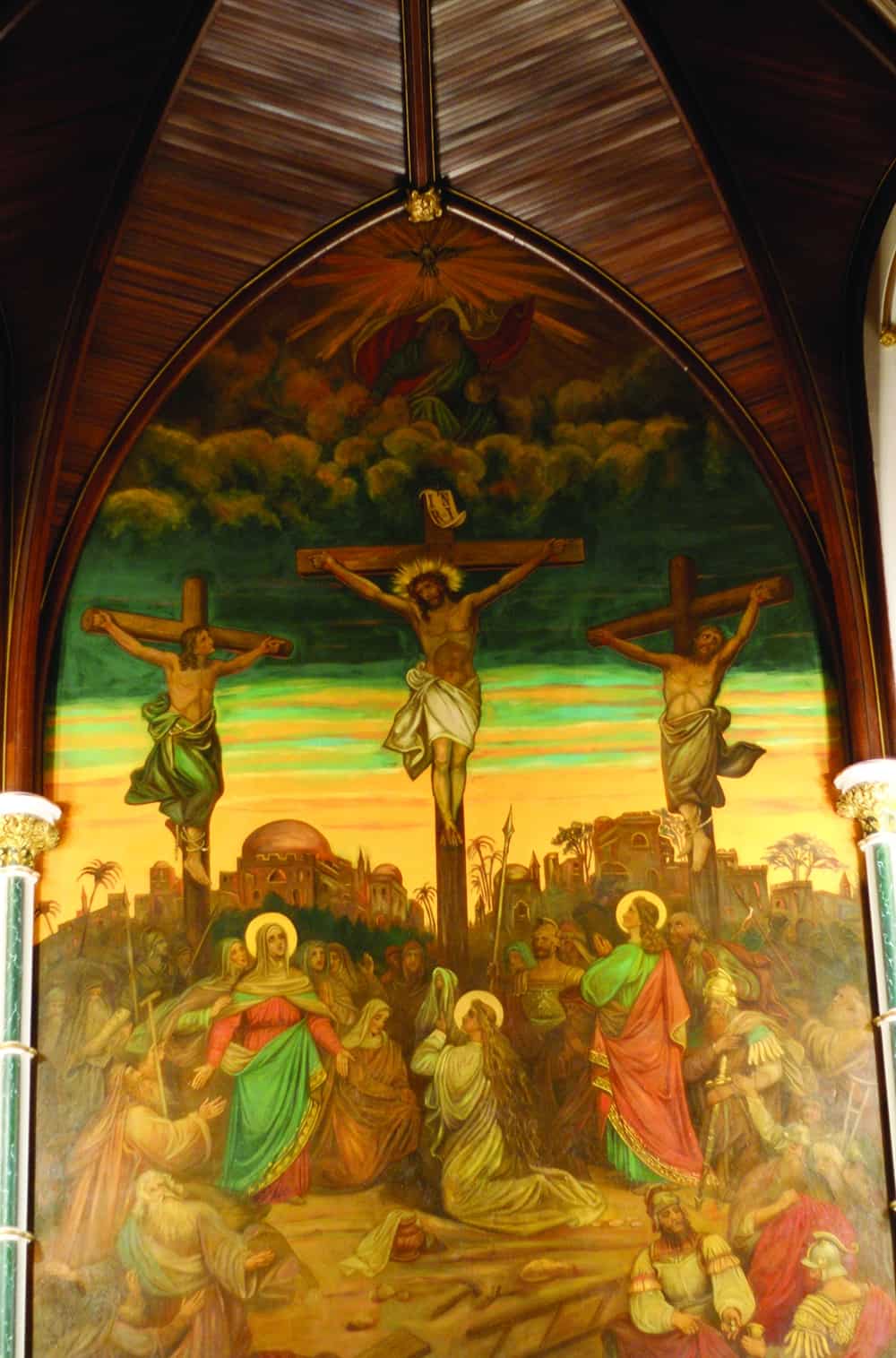
In a large Catholic church located on Verona Street, on the corner of Coffey Park, a massive fresco of the crucifixion overlooks the altar with commanding presence.
The 1898 fresco, a painting method done with watercolors on wet plaster, acts as a eye-catching focal point in the large gothic revival-style church.
Last year, if you would have entered Visitation of the Blessed Virgin Mary Catholic Church, you would have found their fresco in a different state.
Since 2010, Visitation of the Blessed Virgin Mary Church has been undergoing a slow and steady revival process at the hands of Father Claudio Antecini.
He entered a parish $150,000 in debt, struggling to meet its annual deficit of $100,000 and got the church back on its feet within his first year.
But it has not been an easy ride.
Fighting the church building’s quick decay, compounded by damage from Hurricane Sandy, Fr. Claudio has spent the past six years fighting to save a parish once thought to be “in its last days.”
Last year, Fr. Claudio and the church community had to turn their attention to their fresco, which was quickly coming down from the walls in bit and pieces. Flakes came down throughout masses, a large crack showed clearly down the center of the piece, and everywhere you looked, the large work of art was peeling right off the wall.
“If you touched the painting, pieces would fall off,” Sister Máire recalled.
An estimated $250,000 would have to be raised in order to save the old fresco from complete ruin within three years time. The struggling parish was at a loss for what to do.
A plan
On a visit to Italy, Fr. Claudio and a trustee of the church, Frances DeLuca, met art restorer Morena Mezzaro. They convinced the young woman to come and work on Visitation of the Blessed Virgin Mary’s beloved fresco.
She agreed, donating six months of her time to the fresco. At the very least, she would see what could be done.
In May, Mezzaro arrived with her friend Dina Baggio, who assisted in the restoration. With syringes of resins, mixed paint powders, a variety of tiny paintbrushes, and specialized Japanese paper, they diligently tended the church fresco for six months—sometimes for as long as early morning until late into the night.
Of their work, Sr. Máire said, “It was nonstop, exhausting.”
She described their careful process in great detail—from shopping for items that could only be found in Europe, where this kind of restoration is more common, to working on peeled paint coming up from the wall.
“Once, I remember going to an art store in Manhattan,” Sr. Máire recalled. “Morena mixed three different colors of gold to get the right the shade.”
She continued, explaining the process of these two women sitting on the scaffolding day in and day out, flattening peeling paint using humidity to carefully soften the flaking plaster, sticking it down with delicately placed resin, and touching up the cracks with carefully matched paint.
“It was so meticulous, their work. They spent one whole month on Mary Magdalen’s hair,” Sr. Máire exclaimed proudly.
Morena took her work seriously. Fr. Claudio described the moment when she found a protective layer painted over the fresco, which dulled the color and could easily have been removed. She refused to take it down. She explained thoughtfully that it was the intention of the original artist and it was her job to restore the fresco, not change it.
In the end, not only did the two Italian women save the Fresco they came to restore, they also cleaned and shined the wood surrounding the fresco, helped with window restoration, and painted walls, mixing a soft shade of white to replace the previous grey tones.
Fr. Claudio’s eyes shone with excitement, “They felt they were called.”
Trustee DeLuca, expressing her deep interest in the process and how it affects Red Hook, explained that “Restoration of the church is restoration of the community. The power and presence of God is here in Red Hook. We’re just enhancing it.”
The results
Fr. Claudio, Sr. Máire, and DeLuca explained that at the end of October, six months after the two women arrived, they brought their bags to the church to say their goodbyes. But, at the very last moment, Mezzaro noticed a flaw, a last bit of work that needed to be done. Without blinking, she grabbed a ladder, completed the work, and had to run out the door with Baggio to make it to the airport on time.
Sr. Máire recalls that while she watched the scaffolding come down, she looked up and saw, as if for the first time, the dramatic height of the project. “You look up at the immensity of the work,” she explained with wide eyes, as if seeing it all again for the first time.
But, while the work down has been incredible, there is always more to do.
“The paintings in the arches need to be cleaned,” Fr. Claudio said, “Morena may come back in the spring if she has time.”
Church leaders recall that despite her six months of volunteered service to the church, in addition to potential future work, Morena felt that her work is less of a gift and more of a calling from God.
Morena herself seemed to feel a deep attachment to the church by the end of the restoration. Those present for the process recalled her sitting up high on the scaffolding, overlooking the church and saying, “I feel this church is mine.”








